
A herbivore is an animal anatomically and physiologically evolved to feed on plants, especially upon vascular tissues such as foliage, fruits or seeds, as the main component of its diet. These more broadly also encompass animals that eat non-vascular autotrophs such as mosses, algae and lichens, but do not include those feeding on decomposed plant matters or macrofungi.
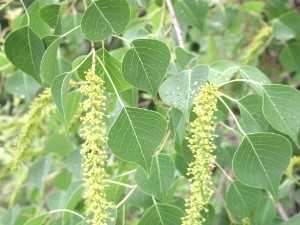
Triadica sebifera is a tree native to eastern Asia. It is commonly called Chinese tallow, Chinese tallowtree, Florida aspen, chicken tree, gray popcorn tree, or candleberry tree.

Allelopathy is a biological phenomenon by which an organism produces one or more biochemicals that influence the germination, growth, survival, and reproduction of other organisms. These biochemicals are known as allelochemicals and can have beneficial or detrimental effects on the target organisms and the community. Allelopathy is often used narrowly to describe chemically-mediated competition between plants; however, it is sometimes defined more broadly as chemically-mediated competition between any type of organisms. The original concept developed by Hans Molisch in 1937 seemed focused only on interactions between plants, between microorganisms and between microorganisms and plants. Allelochemicals are a subset of secondary metabolites, which are not directly required for metabolism of the allelopathic organism.
The diversity of species and genes in ecological communities affects the functioning of these communities. These ecological effects of biodiversity in turn are affected by both climate change through enhanced greenhouse gases, aerosols and loss of land cover, and biological diversity, causing a rapid loss of biodiversity and extinctions of species and local populations. The current rate of extinction is sometimes considered a mass extinction, with current species extinction rates on the order of 100 to 1000 times as high as in the past.

The soil food web is the community of organisms living all or part of their lives in the soil. It describes a complex living system in the soil and how it interacts with the environment, plants, and animals.
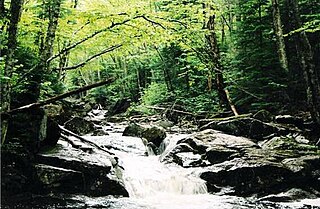
Ecosystem ecology is the integrated study of living (biotic) and non-living (abiotic) components of ecosystems and their interactions within an ecosystem framework. This science examines how ecosystems work and relates this to their components such as chemicals, bedrock, soil, plants, and animals.

Plant defense against herbivory or host-plant resistance (HPR) is a range of adaptations evolved by plants which improve their survival and reproduction by reducing the impact of herbivores. Many plants produce secondary metabolites, known as allelochemicals, that influence the behavior, growth, or survival of herbivores. These chemical defenses can act as repellents or toxins to herbivores or reduce plant digestibility. Another defensive strategy of plants is changing their attractiveness. Plants can sense being touched, and they can respond with strategies to defend against herbivores. To prevent overconsumption by large herbivores, plants alter their appearance by changing their size or quality, reducing the rate at which they are consumed.
Ecological facilitation or probiosis describes species interactions that benefit at least one of the participants and cause harm to neither. Facilitations can be categorized as mutualisms, in which both species benefit, or commensalisms, in which one species benefits and the other is unaffected. This article addresses both the mechanisms of facilitation and the increasing information available concerning the impacts of facilitation on community ecology.
Functional diversity, composition, and species richness affect the biogeochemical processes of ecosystems. However, the degree to which these factors influence ecosystems and whether that influence is significant is debated.
The evolution of increased competitive ability (EICA) hypothesis was first proposed by Bernd Blossey and Rolf Nötzold in 1995 as a way to explain the success of invasive, non-indigenous species. Observing that:
- there is usually a lag period between the time of introduction of an invasive species and the point at which it is considered invasive, and
- invasive plants seem to be more virulent in habitats into which they have been introduced, the scientists presumed a sort of naturalization through modification for non-indigenous plants.
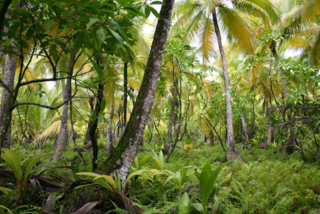
Plant ecology is a subdiscipline of ecology that studies the distribution and abundance of plants, the effects of environmental factors upon the abundance of plants, and the interactions among plants and between plants and other organisms. Examples of these are the distribution of temperate deciduous forests in North America, the effects of drought or flooding upon plant survival, and competition among desert plants for water, or effects of herds of grazing animals upon the composition of grasslands.
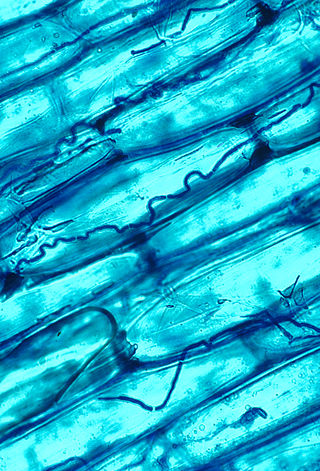
Plant use of endophytic fungi in defense occurs when endophytic fungi, which live symbiotically with the majority of plants by entering their cells, are utilized as an indirect defense against herbivores. In exchange for carbohydrate energy resources, the fungus provides benefits to the plant which can include increased water or nutrient uptake and protection from phytophagous insects, birds or mammals. Once associated, the fungi alter nutrient content of the plant and enhance or begin production of secondary metabolites. The change in chemical composition acts to deter herbivory by insects, grazing by ungulates and/or oviposition by adult insects. Endophyte-mediated defense can also be effective against pathogens and non-herbivory damage.

Community genetics is a recently emerged field in biology that fuses elements of community ecology, evolutionary biology, and molecular and quantitative genetics. Antonovics first articulated the vision for such a field, and Whitham et al. formalized its definition as "The study of the genetic interactions that occur between species and their abiotic environment in complex communities." The field aims to bridge the gaps in the study of evolution and ecology, within the multivariate community context in which ecological and evolutionary features are embedded. The documentary movie A Thousand Invisible Cords provides an introduction to the field and its implications.

Salt marsh die-off is a term that has been used in the US and UK to describe the death of salt marsh cordgrass leading to subsequent degradation of habitat, specifically in the low marsh zones of salt marshes on the coasts of the Western Atlantic. Cordgrass normally anchors sediment in salt marshes; its loss leads to decreased substrate hardness, increased erosion, and collapse of creek banks into the water, ultimately resulting in decreased marsh health and productivity.
Phyllis Dewing Coley is a Biology professor currently teaching at the University of Utah. In 1996 she received the University's Distinguished Research Award. She has been a research associate at the Smithsonian Tropical Research Institute since 1995. In 2023, she was elected to the National Academy of Sciences.
Bikasha collaris is a species of flea beetle in the family Chrysomelidae. It is found in China, Taiwan, and Japan.
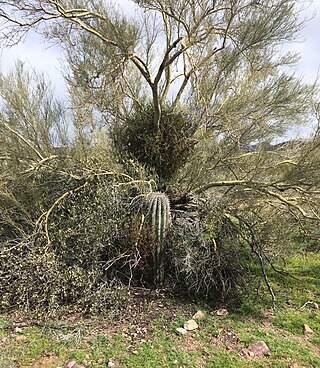
Nurse plants are plants that serve the ecological role of helping seedlings establish themselves and protecting young plants from harsh conditions. This effect is particularly well studied among plant communities in xeric environments.
The enemy release hypothesis is among the most widely proposed explanations for the dominance of exotic invasive species. In its native range, a species has co-evolved with pathogens, parasites and predators that limit its population. When it arrives in a new territory, it leaves these old enemies behind, while those in its introduced range are less effective at constraining the introduced species' population. The result is sometimes rampant growth that threatens native species and ecosystems.
Herbivores' effects on plant diversity vary across environmental changes. Herbivores could increase plant diversity or decrease plant diversity. Loss of plant diversity due to climate change can also affect herbivore and plant community relationships Herbivores are crucial in determining the distribution, abundance, and diversity of plant populations. Research indicates that by consuming large amounts of plant biomass, herbivores can directly reduce the local abundance of plants, thereby affecting the spatial distribution of different plant species. For example, the impact of herbivory is typically more pronounced in grassland species than in woodland forbs, especially in environments that undergo frequent disturbances.

Plant-animal interactions are important pathways for the transfer of energy within ecosystems, where both advantageous and unfavorable interactions support ecosystem health. Plant-animal interactions can take on important ecological functions and manifest in a variety of combinations of favorable and unfavorable associations, for example predation, frugivory and herbivory, parasitism, and mutualism. Without mutualistic relationships, some plants may not be able to complete their life cycles, and the animals may starve due to resource deficiency.










